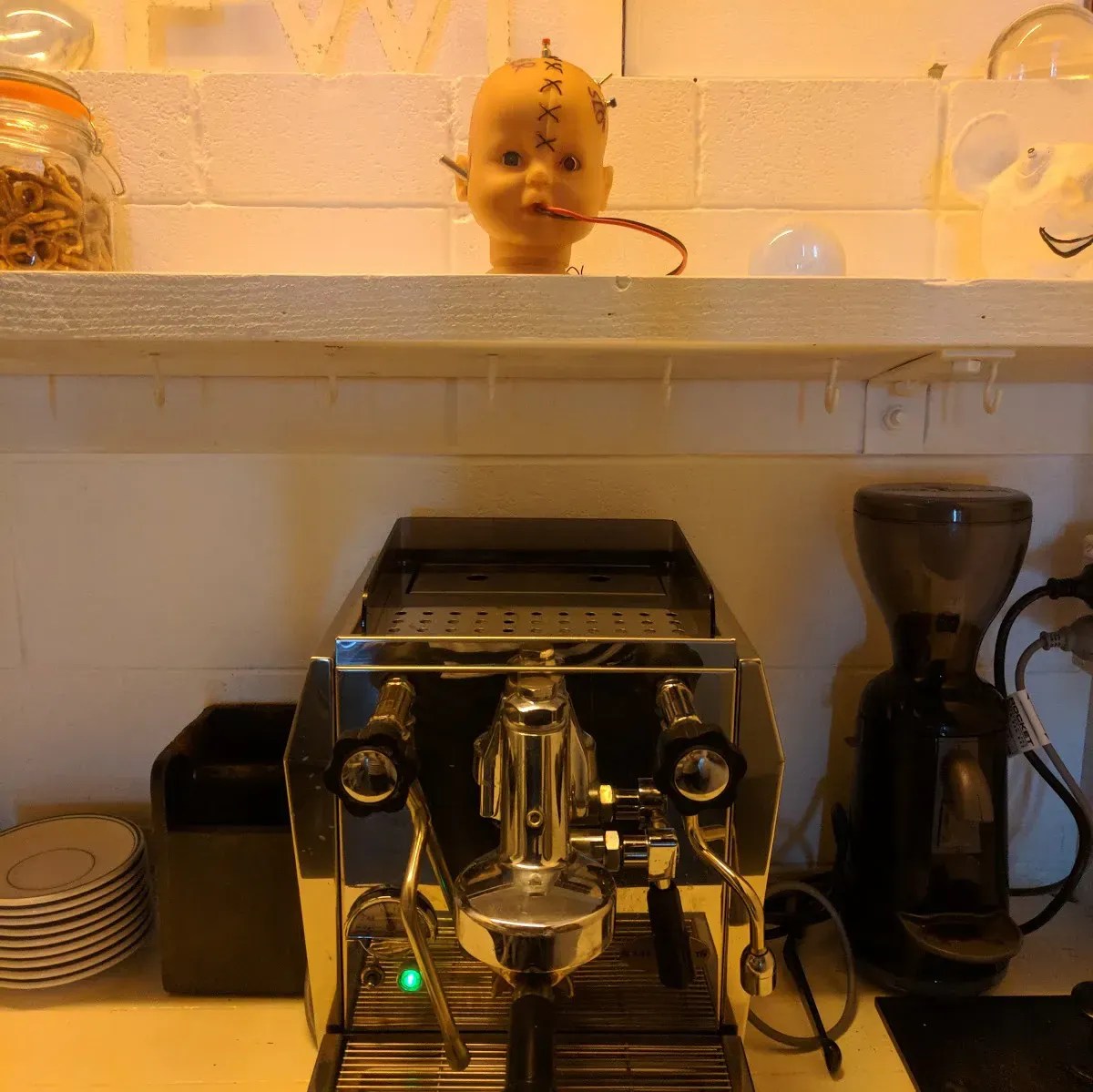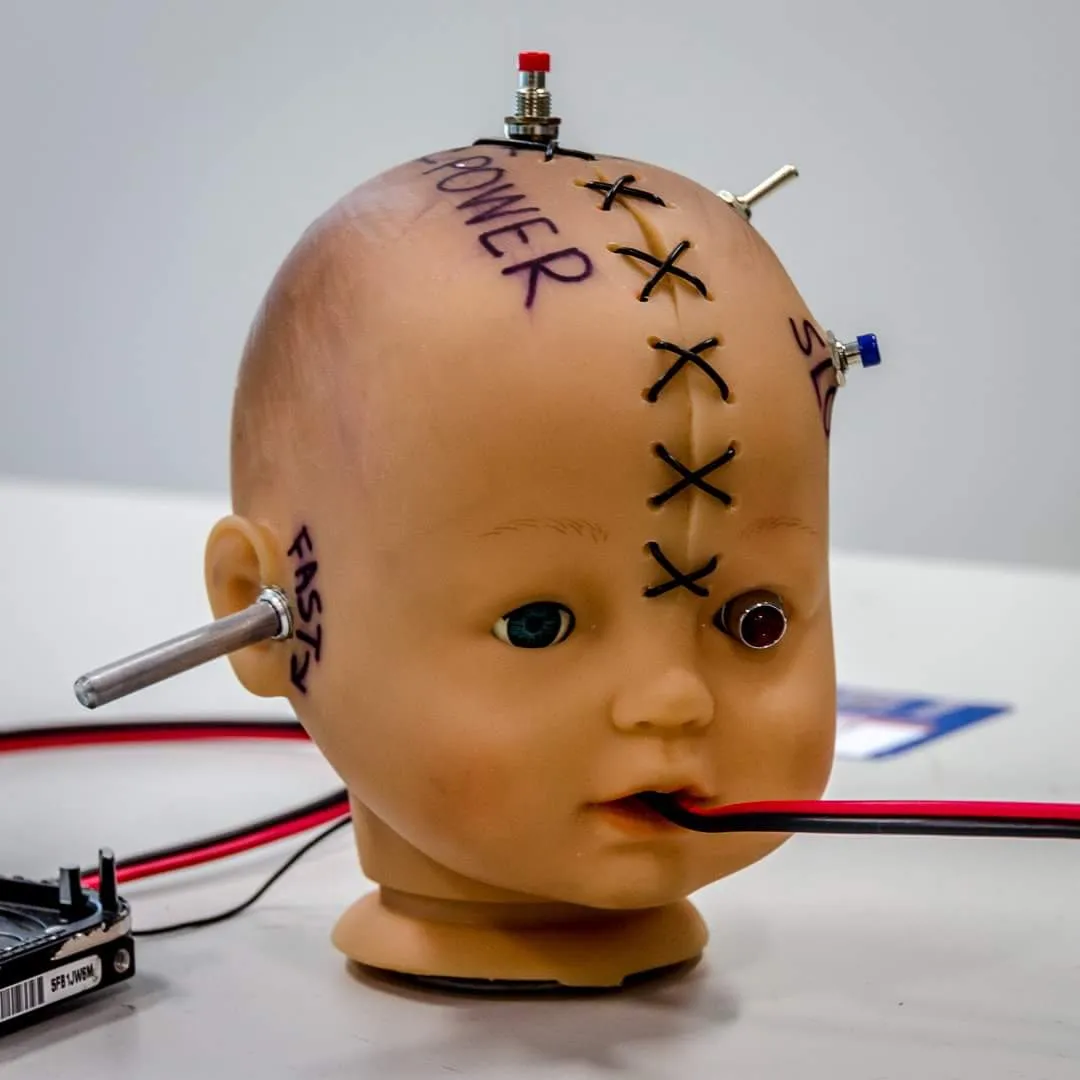The baby doll head of success
Written by

When Charles Johnson gets his coffee in the morning, there’s a baby doll head staring at him. Personally, I would find that a little unsettling, but for Charles, it’s a sign of success.
Let’s wind back a little bit. I gave Charles a call to interview him about winning one of the AUT Colab Creative Technologies Awards at the end of last year. It took a few days to sort that out, because he was at Splore—not just as a reveller, but as part of his job.
Charles works at a place called Perceptual Engineering as a Facilities and Production Assistant. In other words, a kind of jack-of-all trades. At Splore, he was helping to set up the DJ stage and operating the lighting during the performance.
“I was originally looking at advertising,” Charles told me, “but Perceptual Engineering is much better suited in terms of my skills—it really pushes the limits of what I learned at AUT.”
Back to that baby doll head
To figure out how he got here, we need to go back to the baby doll head.
The head is actually from one of his art projects—Nostos. This is the project that won him The Big Idea Award at the Creative Technologies Awards.
Nostos focuses on the concept of nostalgia. If you think of your childhood, you’ll notice that you aren’t like to have very many neutral memories. Rather, your memories will either be happy, sad, or some other strong emotion.
As Charles explained, "Nostalgia” is the compound word of the Greek words "nóstos" and "lagos" which when translated means "the return pain". Described as the pain of remembering the past when confronted with the reality of the present, nostalgia was originally seen as harmful and even considered a mental illness.
But more to the point, memories of the past are not usually accurate. Nostalgic memories are memories that we unconsciously distort and improve with time. We often view them with the cliched rose-tinted glasses. The feeling of nostalgia isn’t about just remembering pleasant memories; it’s about having a safe place to go in your own head when confronted with existential threat.
The price of this is accuracy, and that’s what Charles explored in Nostos. Charles took a variety of electronic toys, like a keyboard, baby doll head, child's learning laptop and various other small toys. He tinkered away with their inner workings by rewiring the circuits.
He doesn’t have any training in electronics, so he learned as he went. “I’m a hands-on person, so I needed to learn this way,” he said.
So he tinkered and tinkered with the toys, until eventually Nostos was ready.
Nostos
Nostos explores nostalgia. The toys are all familiar to most people, and lots of people may well have memories of playing with toys like these as children. But Charles’s tinkerings changed how they work. The toys can then be altered. They can make different sounds than you’d expect, and they can even be connected to one another.
The point here is to gain a critical understanding of how the brain treats memories of the past by exaggerating them. By rewiring and changing how these toys worked, Charles exaggerated them and allowed them to interact in different ways.
Evoking nostalgia is nearly impossible as everyone's memories and childhood's are different, however these toys are familiar enough for most people to recognize that the concept of this project is understood. Through exaggerating the toys, the audience 'becomes' their brain affecting these 'memories'."
Bringing it all together
Charles’s work was displayed at the Creative Technologies Awards. At the exhibit, his now-boss took an interest in Nostos, and asked if he could buy it. Charles decided to stay in touch instead of selling his work, and soon enough, he was working for Perceptual Engineering in his current role—and took the memories of Nostos with him.
So now Charles is working in a job that really stretches and applies his creative skills, every day. And to remind him how he got there, that baby doll head greets him every morning as he makes his coffee. Maybe unsettling to me, but to Charles, it’s a daily reminder of how he got to where he is now.
Check out Charles’ video overview of the Nostos project:
